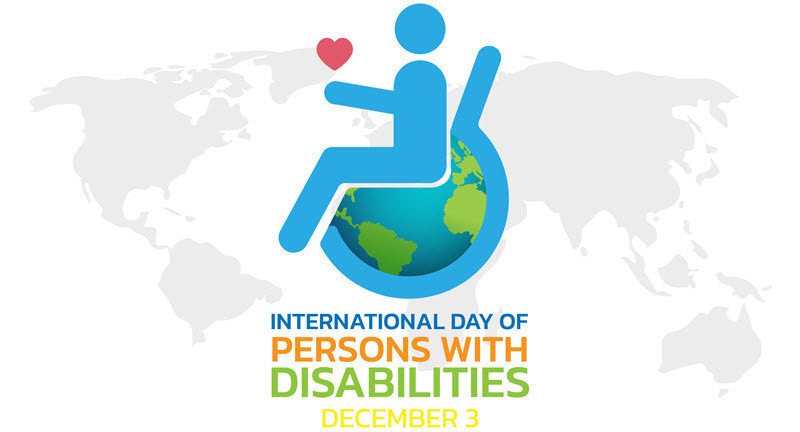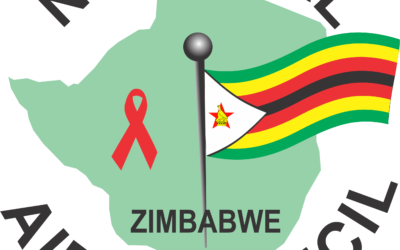
EVERY December 3 comes after another important day on the Zimbabwean calendar, which is the National Tree Planting Day, on December 2. Tree planting is a critical component of human lives, a livelihood option, essential for the environment, resilience building and part of the climate solutions we want. Trees are life and there are no trees without water and there is also no water without trees, quite complementary and reciprocal.
Although this discussion is about another important day on the global calendar, which is about situating and transforming the lives of people with disabilities (PWDs) worldwide, let me focus a bit on the essence of tree planting alongside its merits. The reason trees and forests are important for carbon sequestration are firmly in the public domain. Trees are critical in supporting freshwater reserves, fight climate change and are an effective way of conservation.
In order to ensure green socio-economic development of the agro-based populations of Zimbabwe, which as the first guardians of the country’s forests and its biodiversity, they must be the first beneficiaries of tree planting.
That is why the whole nation and all those who remembered and cared, had to participate in this noble exercise. It is not yet clear how many millions or thousands of tree seedlings found their roots firmly in the soils of Zimbabwe this time around.
Of course, there is a lot of speculation, grandstanding, for publicity and media savvy to attract attention, that is human nature and we cannot run away from it. The month of December has been specifically archived as the time Zimbabweans bend their backs to plant trees in the ground. While trees are life, just as the precious liquid called water, the country has never managed to score desired tree planting goals despite the yearly hype and frenzy.
The reason why the month of December was chosen for this special exercise might be probably and presumably due to the large amounts of rains, bringing wet conditions enabling planted trees to grow without the planters coming back to provide them with the necessary attention they require.
These are also a similar situation with trees that funeral service providers plant at the burial of deceased persons, which most probably die the very same day they are planted. Of course, it is not the duty of the funeral service providers to come back and water the planted trees, but beneficiaries of these trees just do not care much.
Now, back to today’s discussion, which is the International Day of Persons with Disabilities, a very special day indeed on the global calendar but sadly, it always falls by the way side, either on deaf ears or being largely ignored or dramatised as usual.
- Call for PWDs inclusion in electoral processes
- International Day of Persons with Disabilities: In the context of climate-induced disasters
- Edutainment mix: Created equally beautiful
- Gweru cuts rates for PWDs
Keep Reading
This is the day that the world commemorates the lives of PWDs, not as victims, but fellow citizens with the same human rights as everyone else. The theme for this year is Transformative Solutions for Inclusive Development: The Role of Innovation in Fuelling an Accessible and Equitable World.
Therefore, it is noble and essential that, PWDs require transformative solutions that are psycho-social, cultural, socio-economic and environmental, especially in the context of climate change impacts, in order to stabilise their mental health. In addition, PWDs need continuous inclusive care, attention and treatment, without waiting for an occasion to remember that they are with us.
That is why critical pillars of inclusivity, accessibility and equity are prominent in this year’s theme. This means that all things being equal, PWDs should be included in government climate budgeting and planning, including having unfettered access to the country’s resources and services through fair and just means.
PWDs access government’s social services, but with regard to climate change impacts and natural disasters, a lot needs to be done in terms of infrastructural development, psycho-social support, education and training for disasters, post disaster rehabilitation, traumatic counselling, among others. This community of disadvantaged and vulnerable people needs to be empowered even when they say “disability is not inability”, they are able if they are empowered.
In the event of climate-induced disasters impacting on them, as a result of being on the frontline, as they are least equipped and protected to deal with the violent circumstances resulting from extreme weather events, these people are bound to suffer more. Furthermore, resilience building, planning should be done with them in mind and not as an afterthought.
A closer analysis of the state of buildings and other forms of infrastructure shows that they are not designed with PWDs in mind, taking into account their plight. They compete for the same spaces and services with everyone else, they lack knowledge and information on how to deal with climate-induced disasters.
Their placement before, during and after disasters continues to show a number of structural and procedural gaps, which every nation should seriously work on.
Climate-induced disasters that have a large bearing and impact on the physical wellbeing and livelihoods of the disabled, range from floods, landslides, fire out-breaks, cyclones, storms, violent winds, earthquakes, droughts and famine, among others.
As a result of neglect, stereotyping, societal and cultural attitudes, a large number of PWDs are poverty-stricken, hence they need to be placed at the centre of resilience building and psycho-social support.
In this regard, there cannot be any transformation without inclusion and equitable treatment of the disabled in line with the universal charter of human rights as their rights are human rights too.
PWDs include the physically challenged, mental, intellectual or sensory impairment. Their interaction with the physical, structural, socio-economic, infrastructural, cultural and extreme weather events pose barriers and obstacles acting as stumbling blocks to their mobility.
These are present in transport systems, lack of specialised toilets, lack of wheelchairs for some, including crutches or hearing aids as well as protective clothing to shield them from extreme weather conditions and when disasters strike.
The absence of these essentials normally leads to issues of mental health challenges, experienced as a result of post traumatic experiences and disorders caused by climate-induced disasters not attended to.
When they suffer from mental health, sadly socio-cultural issues come in and their conditions are viewed as resulting from witchcraft, myths, traditional or religious.
In this regard, wrong pathways are used to handle issues of climate-induced mental health instead of post-traumatic counselling, psychosocial support and rehabilitation for stabilisation.
Therefore, disaster-inflicted mental health on PWDs needs enough research, sustainability reporting not greenwashing so that they are communicated in empowering and transformative ways.
Affected PWDs also need to recover and bounce back from climate-induced disasters. They need to be active participants in their own healing and recovery processes.
Continuing to see them as victims and helpless will not help matters, but exacerbate their situations.










